By FHP on 7/6/18 3:11 PM
INTRODUCTION
Not too long ago, we reached out to subscribers to get input on a topic very near and dear to our hearts: mobile carts/workstations. We sent out this simple, one-question survey to subscribers to see what was on their minds:

Interestingly enough, most responses we received were centered around Power Supplies & Battery Types associated with mobile carts.
Questions we were asked included: how do mobile cart power supplies work, which battery type works the best, and the types of battery solutions we offer.
Our goal as a healthcare solutions company is to not only offer up high-quality, custom-fit products for EMR & Manual Charting, but also to educate and inform by providing relevant, helpful material.
Let's take some time to break down these questions and give a quick rundown on the topic of Power Supplies & Battery Types.
What you'll learn reading this article:
- Definition/Function of a Mobile Cart/Workstation Battery
- What is a Lead-Acid Battery?
- What is a Lithium-Ion Battery?
- Pros and Cons of Each Type
- The Difference Between Permanent vs. Swappable (& AC vs. DC)
FUNCTION OF THE BATTERY IN WORKSTATION USE
Power supplies and batteries are an essential part of the mobile cart/workstation experience.
They give power to the very devices caregivers utilize for EMR and patient documentation. They also have the capability to extend the battery life of EMR devices external to the cart itself (more on this in a second).
Carts that incorporate a battery to aid in device use are called powered carts.

Whether or not your mobile cart requires a power supply hinges upon a few different factors.
The "type" of cart you are using is probably the most obvious indicator, and can be determined by simply looking at the apparatus your cart uses to display information.
If your cart utilizes a device that requires a constant feed of electricity (like the CPU & Monitor cart does on the left), you WILL need a power supply/battery to support it.
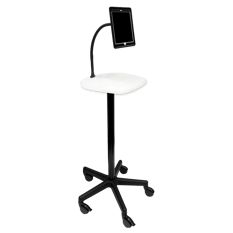
The flip side to this is if your cart uses a device that is not necessarily reliant on an external power source for proper operation.
A tablet or laptop cart (like the one on the right), for example, does not require a power supply/battery, but greatly benefits from the addition of one.
WHAT THE BATTERY BRINGS (hint: UP-TIME)
No matter which device is used, the addition of a power supply/battery significantly improves a caregiver's experience with a cart.
That's because, in essence, a battery gives the caregiver more time to use the actual cart itself. With a battery at your disposal, up-time increases (the amount of time a cart is out on the floor/able to be used), and down-time decreases (the amount of time a cart is not on the floor/out of service).
The following passage from this battery blog does an excellent job of simplifying why the up-time associated with carts is so essential for caregivers (and why down-time is so detrimental):
"When mobile computers are low on battery...they can go out of service. This creates interruptions to caregiver workflow and delays that can impact organizational efficiency and productivity, and in some cases, patient safety. Medical cart batteries address this by helping to maximize up-time for both mobile computers and other portable diagnostic and monitoring devices." ¹
A battery's primary purpose is, in many ways, to maximize a cart's up-time and minimize its down-time.
But choosing the right battery for your cart is not as simple as choosing the one that promises the most up-time.
There are a handful of other qualities and features to consider when picking out a battery—factors that make some outside research important. In order to foster smart purchasing decisions, let's look at the two primary battery types out on the market (and the unique qualities of each) to understand which is right for our cart.
MORE BASICS (LEAD-ACID VS. LITHIUM-ION)
Most of today's powered medical carts are equipped with either a Lead-Acid battery or a Lithium-Ion battery.
While there are other existing battery types out there, these two pretty much dominate the medical cart market at the moment (and for important reasons).
Lead Acid batteries are the oldest rechargeable batteries in existence.
They're what you typically think of when picturing a battery; the very same ones used in cars, wheelchairs, golf carts, etc.
Historically, Lead Acid batteries have been the go-to for medical carts and just about all medical equipment. Hands down the most familiar, durable, and time-tested of the battery types, the Lead Acid battery provides a cheap & reliable solution for a cart. It's old age, however, brings about some concerns that should be addressed.
Let's take a peek at both the advantages and disadvantages of the Lead-Acid Battery: ²
.png?width=878&name=Lead-Acid%20Batteries%20Pros2FCons%20(2).png)
Lithium-Ion batteries are relatively new to the medical cart scene, but the impact they've already brought about is gigantic.
These are the batteries found most commonly in cell phones and other devices where size & power is essential.
What the Lithium-Ion battery promises is, in many ways, the opposite experience of a Lead Acid Battery. This is a battery all about high energy density, tiny footprint, and constant technological improvement.
Much like the old age of the Lead Acid system sheds some negative aspects onto the user experience, Lithium-Ion batteries suffer too from some of its newness. ²
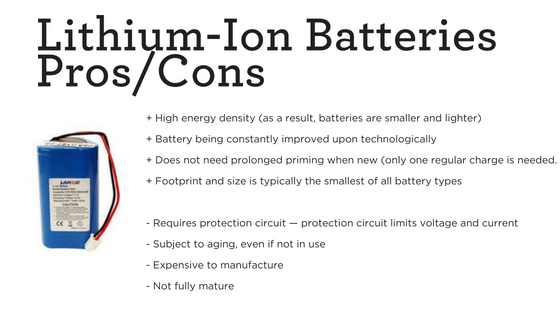
PERMANENT VS. SWAPPABLE, AC VS. DC, & WHAT WE OFFER
Making the choice regarding which battery is right for you will always be a highly personal and situational one.
We, however, have picked two of our personal favorites to help narrow down the scope and give you a better idea of what current offerings are like.
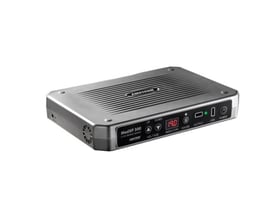
The MEDXP 300 External Battery
The Amstron MEDXP-300 Version 3 battery is designed for devices that need maximum power between charges—and can be used for laptops, medical devices, and other electronics.
Depending on the application the MEDXP-300 Version 3 provides 10 - 15 hours of run time.
It offers you the ability to go wireless for long periods of time without having to be tethered a wall or power source. A great alternative for hospitals, construction sites, or emergency responders.
The MEDXP-300 uses advanced Lithium-ion battery technology allowing you unequaled productivity and mobility.
The MEDXP 300 is a great example of a standard permanent battery.
These batteries tend to stay on/get mounted to a cart and function as a "stationary" power source for other devices. Like most medical batteries out on the market, the MEDXP is a DC-only battery type. This means the MEDXP can power other DC-oriented devices (like laptops/most electronics), but not AC-oriented devices (like computer monitors).
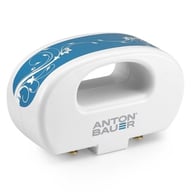
A lightweight, high-capacity Lithium-Ion battery by Anton Bauer that delivers long, reliable run-times. Its simple, stylish, and ergonomic design makes it easy for caregivers to install and remove the battery using one-handed operation.
Fast charging times (approximately 4 hours) and capabilities to hot swap (thanks to the Elora Battery Interface) make this system a must for those looking for superb powering options.
The Elora 240 is a great example of a hot swappable battery. These batteries are meant to be removed and replaced by another "hot" one whenever power is low. Think of rechargeable batteries for a camera or remote.
The Elora 240 is an AC and DC battery type. It supports all current types and electronics/devices , thereby making it a more versatile power supply. This, however, comes at a cost—these battery types are usually more expensive and less energy efficient than DC-only batteries.
To learn more about the difference between Alternating Current and Direct Current, check out this nifty post by Circuit Globe. ³
CONCLUSION
Whatever battery you do decide on, what's comforting to know is it can pretty much be integrated into whatever cart you own.
Power systems are, for the most part, pretty straight-forward. Finding the best battery for your needs, however, can be much more challenging.
We have plenty of experience working hand-and-hand with clients to create custom carts with integrated power solutions. Take a look at some of our case studies here, or click the banner below to check out some of our other power supply offerings.
References:
1) Top Ten Things to Consider when Looking for Medical Cart Batteries. https://www.definitivetechnologygroup.com/blog/top-ten-things-to-consider-when-looking-for-medical-cart-batteries/
2) What's the Best Battery? http://ieeexplore.ieee.org/stamp/stamp.jsp?tp=&arnumber=6758683
3) Difference Between Alternating Current (AC) & Direct Current (DC). https://circuitglobe.com/difference-between-alternating-current-ac-and-direct-current-dc.html
_11wX8.5h-FINAL.png?width=721&name=FP-Logo-Horizontal-(COLOR)_11wX8.5h-FINAL.png)
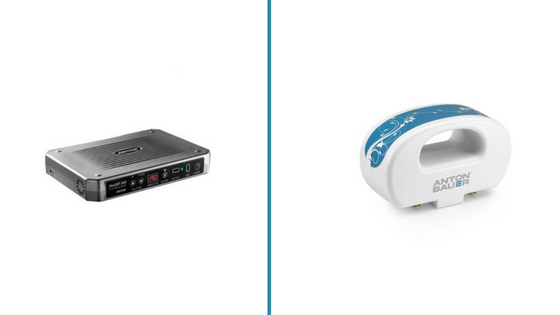


comments